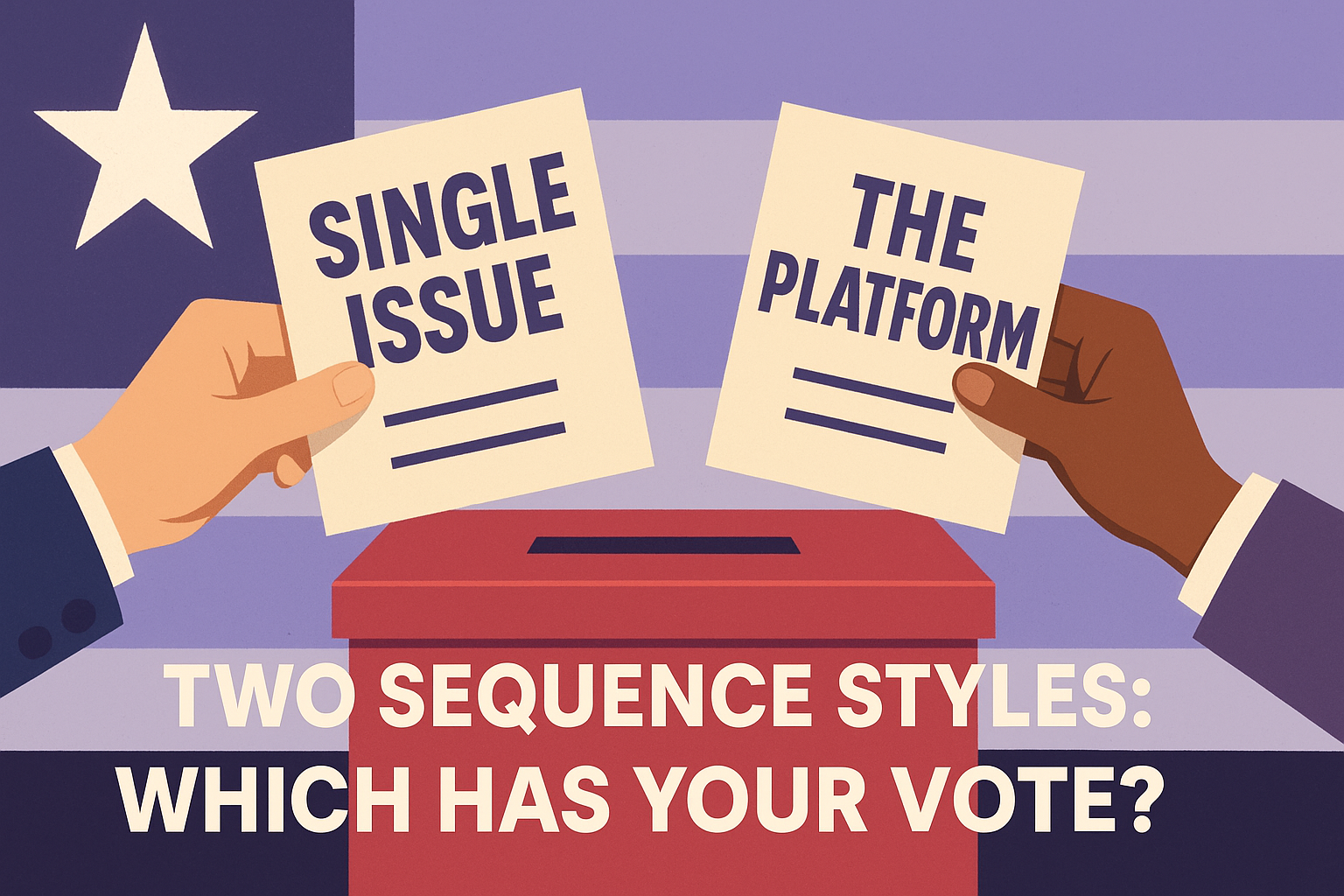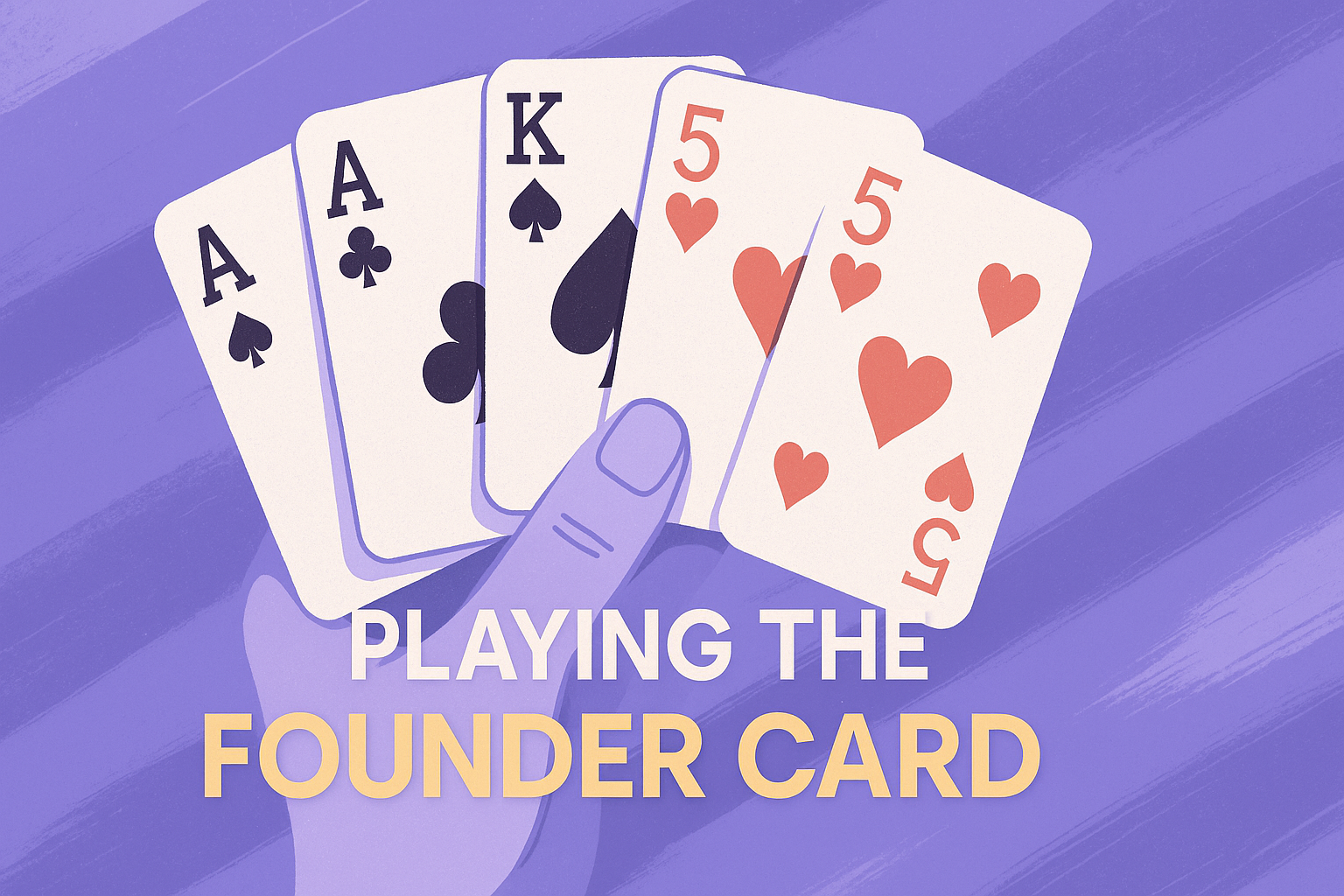Two Sequence Styles: Which Has Your Vote?
There's two camps for sequence design that are performing best right now. Which has your vote? The "platform"... or the "single issue".

Take a look at your cold email sequence for a second.
What kind of voter are you?
This has nothing to do with politics.
It has everything to do with how you think about message strategy in outbound.
In the wild, we consistently see two very different sequencing philosophies.
Both can work. Both have logic behind them. And both show up inside high-performing outbound programs.
But they lead to very different decisions about what you put into a 2 to 3 touch sequence.
Before we get into those two camps, let’s anchor on the basic principles most effective outbound teams follow.
The Fundamentals: General Email Sequence Best Practices
There are a few things almost all successful outbound teams follow, regardless of their philosophy.
The One Idea Rule
This one is universal.
Each cold email should communicate one idea. Tight and simple.
- One email, one idea
- One paragraph, one supporting idea
- One sentence, one micro idea
The minute you ask the reader to hold two ideas at once, you watch your reply rates fall.
Lavender’s dataset shows this clearly.
Going from one question to two questions leads to a 26 percent drop in response rates.
Two questions signal two ideas.
And cognitive load kills performance.
Short Sequences Only
Modern deliverability punishes long sequences.
Most high-performing teams stay in the range of 2 to 3 emails per contact over 30 to 45 days.
Push beyond that and you dramatically increase your chances of being flagged as spam.
Lavender's data also shows there's a diminishing return after that 3rd email. You see reply rates collapse.
So the basics are simple:
Short sequences. Simple messages. One idea per email.
Everything beyond that is strategy.
Who has Your Vote? Two Sequencing Philosophies
Check out these two sequence styles and pick carefully.
Option A: The “One Issue Voter” Sequence
This camp believes a sequence should feel like a single, unified message.
One core point repeated across 2 to 3 touches.
The logic is straightforward:
- If you only get a few emails, stick to one angle
- Reinforce the same idea in slightly different ways
- Do not introduce other value props or narratives
- Let the repetition do the work
It is a rifle shot.
Focused. Tight. Direct.
This approach works especially well when:
- your trigger is strong
- your list is highly targeted
- the pain you solve is narrow and consistent
- the reason for outreach is uniform across the list
Under those conditions, one idea might be the only idea you need.
Option B: The “Platform Voter” Sequence
The other camp treats the sequence as a small platform of reasons to engage.
The one idea rule still applies within each email.
Each touch is still simple and focused.
But the sequence itself explores multiple angles.
It looks like this:
Email one → one idea
Email two → a different idea
Email three → another idea that complements the others
You create a progression instead of repetition.
A scattershot instead of a single approach.
This works particularly well when:
- the list is broad
- the "triggers" or reasons to reach out are either soft or theirs multiple
- different contacts tend to respond to different motivations (or you don't know which they will reply to)
- you need multiple paths to relevance
Inside Ora, we've recently seen this approach outperform the single-issue structure.
Some campaigns see two to four times higher performance because the sequence gives prospects more chances to find the angle that resonates.
It is more surface area.
Without more complexity.
Think of it as a platform rather than a single-issue argument.
So Which One Should You Use?
TThere is only performance.
If your list is tight and your trigger is clear, a one issue voter sequence might be perfect.
If your list is wide or you want multiple chances to earn attention, a platform voter sequence might be more effective.
The simplest way to find out is to run both.
If you want to test them quickly, go to ora.im, spin up two campaigns, and see which structure your audience votes for.
The truth is always in the replies.







